India continues to be one of the fastest growing economies in the world. After the temporary deceleration due to the impact of demonetisation and implementation of Goods and Services Tax (GST), the recovery in economic growth is now largely complete. It is estimated that GDP grew at more than 7% in the second half of fiscal 2018. During FY18, there were several positive developments in the economy, which will further accelerate this growth over the next few years.
Read moreThe long-delayed GST was finally implemented and it will go a long way in improving the business environment in the country. Government’s focus on infrastructure development, banking reforms and affordable housing, amongst others, will support the growth in the medium term. Growth in some segments of the rural economy has been slower in the recent past. However, forecast of a normal monsoon bodes well for the agriculture sector and would drive the rural consumption.
While the Indian economy has expanded at an average annualized growth rate of around 7% over the past several years, there have been patches of slower growth in between. However, consumption growth remained quite resilient throughout this period. High frequency data such as automobile sales, air traffic, and credit offtake amongst others, suggests continued strength in discretionary spending. Private final consumption is estimated to have grown at a CAGR of 7.0% over FY13-18 in real terms and 12.0% in nominal terms. This, along with the trend of organized businesses gradually gaining market share in various sectors, bodes well for growth in advertising spends.
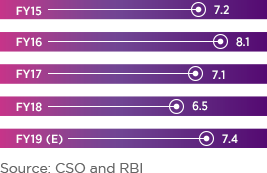
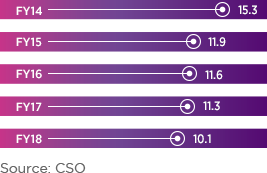
The Indian media and entertainment (M&E) industry witnessed another year of all-round growth. The pace of growth marginally accelerated in CY17, despite the lingering effect of demonetization and the impact of GST roll-out. According to the FICCI-EY Report 2018 (Report), M&E industry grew by 12.6% YoY in CY17, to
₹ 1,473 billion. Despite the strong growth over the past several years, India’s per capita entertainment consumption is much lower than not only the developed markets but also countries with similar income levels. This provides a significant headroom for sustained growth driven by rising disposable incomes and increasing access to entertainment content. According to the Report, the Indian M&E industry is expected to grow at a CAGR of 11.3% to ₹ 2,032 billion over the next three years, driven by growth in all the segments.
During the year, television increased its reach and engagement with the audience, further enhancing its reputation as the default entertainment medium. Print media continued to grow, albeit at a slower pace, due to multiple headwinds faced during the year. The movie industry surpassed all previous records riding on a strong performance at both the domestic and the international box office. Online video consumption continued its exponential growth due to the increased availability of affordable data and content on digital platforms. Following the auction of Phase III licenses, FM radio expanded into newer cities. Live Events growth was led by premium properties, activations, and sports events.

Globally, time and wallet share of leisure activities has a positive correlation with per capita income. Leisure ranges from lowinvolvement low-cost activities like listening to music to an expensive foreign vacation. The choice of activity depends on several factors, but affordability and ease of access play a vital role. As compared to other forms of recreation, content-based entertainment scores high on both these factors.
In India, for most of the consumers, watching content on television has been the primary source of entertainment, and now digital is also becoming relevant. Over the past two and half decades, content availability on television has exploded across genres, languages, and formats. This extensive range of content is accessible at an average monthly price of USD 3. Over the past 18 months, digital has further widened the content choice and availability, at an affordable price.
India’s content consumption has been in a secular growth phase. Despite several years of growth, it still compares adversely with developed as well as emerging markets. For example, India’s television penetration is low at around 64%. Online data usage in India has increased by 15 times over the past two years, but the total digital content consumption still pales in comparison with other countries. Despite producing the maximum number of movies every year, the size of the movie industry is small and cinema visits per adult has room for growth. And, the market for ticketed live events is just opening up.
As the disposable income rises and infrastructure improves further, the growth in content consumption could accelerate. Television is the default entertainment medium for a household and hence television penetration will continue to grow. The disparity in content consumption between rural and urban areas visible today is primarily explained by the difference in power availability. The government’s push to improve electrification of rural areas will help narrow the gap. In several local language markets, higher availability of content gave a fillip to consumption. This trend will continue as more content is produced in these languages.
Rising smartphone penetration, improving data network, and falling data tariffs have added a new dimension to the growth of content consumption. In India, a television is shared by several people from different generations as more than 95% households have a single TV. Mobile is fast becoming the second screen for many. Interestingly, in India, television consumption has grown alongside this multi-fold increase in digital consumption, highlighting the growth potential of the market. As India continues to see growth in discretionary spends, entertainment consumption would be one of the key beneficiaries.

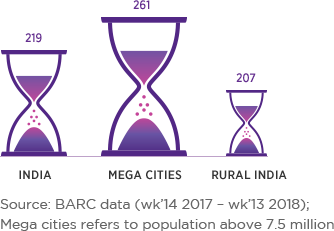

India’s advertising spends have been growing at a healthy pace over the past several years, driven by increasing urbanization, rising aspirations, and growth in discretionary spends. However, the ad spends relative to the size of economy is significantly low, highlighting the long-term growth potential. There are several visible trends at work which will drive growth in ad spends. Firstly, even in well-penetrated staple consumer goods, like shampoo and detergent, India’s per capita consumption is a fraction of other developing countries. Similarly, penetration of consumer durables is low. As income rises, spends on consumer staples and discretionary products will increase thereby driving ad spends.
Read moreSecondly, at present, consumer staples dominate ad spends in India. Sectors, such as BFSI, healthcare, travel and leisure, do not contribute significantly to the advertising pie. The addressable market for these services is limited currently. Consumption of these services will increase as disposable income crosses a certain threshold, encouraging them to spend more on advertising. Incipient signs of the same are already visible with increasing advertising for financial savings products and diagnostic services. These categories emerging as large advertisers will provide the next leg of growth.
Lastly, alongside strong growth in consumption, there are a few factors that would aid ad spends growth. Digital is bringing small businesses, which found traditional media unaffordable, into the advertising net. By allowing a large number of small advertisers to run campaigns, digital is significantly expanding the ad market. Separately, organised businesses have been gaining market share across categories. As these businesses rely on brands to drive sales, they will continue to increase spends on advertising. These factors along with a strong macroeconomic growth will sustain the advertising growth in the medium to long-term.
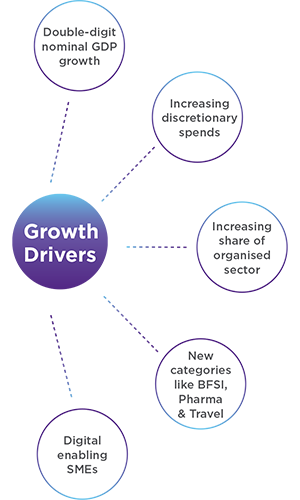

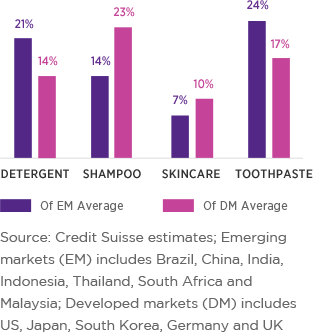
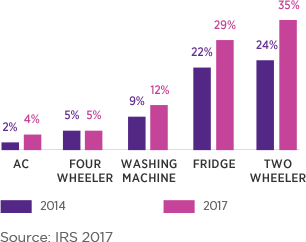
At an average ARPU of USD 3 per month, India ranks at the bottom in terms of cable and satellite (C&S) subscription price. This is even more stark given that a typical pay TV subscriber receives around 100 pay channels. The consumer APPU growth has trailed inflation over past two and half decades even as content choices for consumers multiplied across languages and genres. The two prime factors that explain low ARPUs in the country are, a highly fragmented distribution industry and the presence of analogue cable for a long period.
Read moreUnlike a handful of C&S operators in most of the countries, India has 4 large DTH players and thousands of multi-system cable operators (MSOs). However, over the past decade, the distribution space has seen significant consolidation with top 10 players accounting for almost half of the pay subscriber base. Secondly, the transition from analog to a digital addressable regime has increased the channel-carrying capacity as well as the transparency in the value chain. While increased channel capacity means that consumers get access to more number of channels, an addressable system enables tiering and packaging of channels to cater to a varied consumer base. Digitized systems have significantly improved transparency in the value chain leading to improved monetization for MSOs as well as the broadcasters. With digitization nearing completion, land-grab for subscribers is coming to an end. Digitization along with consolidation presents an opportunity for ARPUs to rise commensurate to increase in quality and quantity of content. Additionally, HD penetration, growing at a rapid pace, could top-up the subscription growth for television.
Digital has opened another subscription opportunity for content creators. Globally, the digital subscription market has thrived due to clear economic arbitrage on moving from pricy cable packages to affordable OTT subscriptions. Low-pay TV ARPU in India does not present that cost arbitrage opportunity. However, if the content choices on the digital platform becomes compelling, consumers will pay. Also, innovation in pricing to enable bytesized consumption and Indian consumers’ growing familiarity with online payments could drive digital subscription revenues.
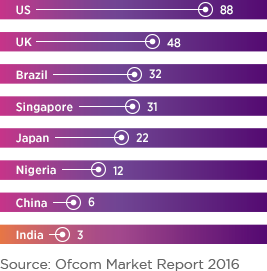

The television industry in India continued on its growth trajectory, albeit a bit slower than the previous years. The transient slowdown was primarily due to the GST rollout impacting the advertising growth while domestic subscription growth was affected by the uncertainty regarding the fate of TRAI tariff order. In CY17, the industry grew by 11.1% to ₹ 660 billion from ₹ 594 billion in CY16.
Read moreThe year began on a positive note with advertising growth recovering from the impact of demonetisation announced in November 2016. However, with the impending move to the GST regime in July, the advertisers, especially consumer goods, started cutting back spends towards the end of first quarter. As their distribution chain was not adequately prepared for the transition, new product launches, which contribute significantly to ad spends, were deferred. However, as the transition to the new regime was completed, the second half of the year saw a sharp rebound in ad spends across categories.
TRAI’s tariff order, which deals with the content agreements between broadcasters and distributors, remained mired in legal dispute throughout the year. The lack of clarity on the status of this regulation had some impact on broadcasters’ subscription revenue growth for the year. The exit of a DTH player during the year also affected the subscription growth for the industry.

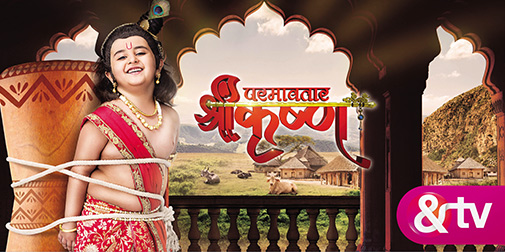
Television in India is the largest and the most effective medium to reach consumers. With 557 million daily tune-ins and an average of 225 minutes (Q4FY18) spent per day, the reach and engagement offered by television in India is unparalleled. Television viewership is increasing across genres and demographics, as evident from the BARC data. The growing reach of different genres indicates that increasing choices available to the audience is one of the drivers for the increasing television consumption. Multiple genres and languages enable reach to specific audience segments.


Television viewership has also seen an increase across languages, especially regional language channels. This is driven primarily by increased availability of original content in these languages. Historical data suggests that as more channels are launched in a market or the original content is increased, it leads to an increase in the content consumption, rather than cannibalisation. For example, the launch of Zee Yuva (Marathi), a youth-focused entertainment channel, and Colors Tamil (Tamil), a general entertainment channel, has led to an increase in the total viewership in the respective markets.

In India, ad rates are linked to rating points – a percentage metric of viewership. Total rating points increase only if average television consumption per person increases. Accordingly, rating point does not reflect the expanding television universe. Over the past decade, measured universe of television audience has grown by six times. Number of impressions have grown by a similar factor to around 28,000 million per week. The 2% CAGR in rating points does not capture the 30% CAGR witnessed in impressions over the past five years. Though the cost of advertising per rating point has been rising, cost per impression has actually seen a decline. Similar to the global practice, India would eventually move to an absolute metric like cost per impression. This would enable broadcasters to monetise the sharp growth in viewership.
TRAI released the tariff order in March-2017 with an objective to allow viewers to choose channels on an a-la-carte basis. The order was supposed to be implemented from May-2017, but was challenged by multiple stakeholders. Of the two cases filed against the order, one was being heard by the Madras HC. After a split verdict by a two-judge bench in March-2018, the case was referred to a third judge who upheld the validity of the order except for one clause. As per the clause, in a content agreement between broadcaster and distributors, a bouquet of channels cannot be priced at less than 85% of the sum of a-la-carte price of these channels. The court found this provision to be arbitrary and hence not enforceable. Effective implementation of this order requires a significant upgrade of infrastructure and subscriber management systems of the distributors. Given the low ARPUs in India, it might be difficult to offer channels on an a-la-carte basis to every consumer. As a result, bouquet may remain the most popular option for subscription even under the new regulation.
DD Freedish, the state - owned distribution platform offering free to air(FTA) channels to subscribers, has been an important driver for reaching new audience segments, primarily in rural areas.This increased reach, along with measurement of rural audience, has improved monetization of FTA channels.Most of the leading broadcasters have FTA channels which largely run on the library content.Freedish had a process to auction slots to broadcasters to air their FTA channels.However, during the year, the Ministry of Information and Broadcasting (MIB) has put auctioning of slots on hold as it is reviewing the existing policy.Channels already on the platform continue to run until the new policy is announced.
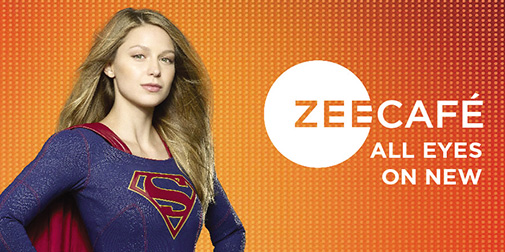



In its 25th year, the Domestic Broadcast Business was the #1 entertainment network of the country. During the year, ZEEL saw a 200 bps improvement in its market share and reached an all India viewership share of 18.0%. This increase in viewership was driven by the improved performance of our flagship channel Zee TV, increased traction of some regional channels, and the integration of the two channels acquired from RBNL.
Read moreDuring the year, the network adopted a refreshed brand identity with new logos for all the channels. Some of the channels were also relaunched with a new brand proposition. Our new brand identity gives a unified look and feel to the network, while bringing the corporate brand philosophy of ‘Extraordinary Together’ to life. The initiative was accompanied by iconic 360o marketing campaigns, enhancing the brand equity and brand recall significantly.
The Hindi GEC bouquet contains 6 channels - Zee TV is the flagship channel, &tv is the Company’s second GEC targeted at urban audience, Zee Anmol and Big Magic are the FTA channels catering to the rural viewers.
Zee TV was the #1 Hindi GEC during the year. After a weak performance in FY17, the channel exhibited an impressive turnaround across all the parameters. With a 200 bps increase in market share, top two shows in fiction category, and the two biggest fiction launches of the year, Zee TV has been on a continuous growth trajectory. On its 25th anniversary, the channel unveiled its new brand promise of ‘Aaj Likhenge Kal’ to bring to its audience stories that inspire ordinary people to do extraordinary things.
&tv’s market share was largely flat during the year. In the context of increase in competitive intensity on account of one major competitive channel taking the FTA route and increased content investments by most competing channels, the performance of the channel was satisfactory. The channel aims to increase loyalty amongst the urban audience with its differentiated programming initiatives.
Zee Anmol was the #1 channel in the FTA genre with leadership in 42 weeks. Big Magic improved its market share in the segment.
ZEEL’s Hindi Movie cluster comprising 7 channels - Zee Cinema, &pictures, Zee Classic, Zee Action, Zee Anmol Cinema, Zee Cinema HD and &pictures HD, continued to maintain its #1 position during the year. Besides performing well on library titles, the channels also aired world television premieres of hit Bollywood movies such as Dangal, Toilet – Ek Prem Katha, Secret Superstar and Raees. With the acquisition of movie library rights, including future rights and rights of movies under production, the Hindi Movie cluster has strengthened its catalogue which should provide an impetus for growth.
Regional GECs continued their strong performance and strengthened their competitive position in respective markets. ZEEL’s regional portfolio caters to 7 linguistically diverse markets - Marathi, Bengali, Kannada, Telugu, Tamil, Oriya and Bhojpuri.
Zee Marathi continued to be the #1 channel garnering a majority share in the Marathi markets. Zee Yuva, the only Marathi channel in the youth entertainment space, became the third highest channel by reach and helped grow the network’s share in the Marathi market.
Zee Bangla was the #2 channel during the year. It gained significant share in the fourth quarter to become the leader in the urban market. While consolidating its urban reach, the channel has also undertaken ground connect events to increase its rural viewer base, which are yielding results.
Zee Tamil, the #3 channel, continued on the growth trajectory witnessed in FY17, and ramped up its market share in each of the quarters. The channel’s fiction shows have shown a significant improvement in ratings, which provide a solid foundation for building loyal viewership. The channel was relaunched with the proposition of ‘Let’s bridge hearts and welcome change’, appealing to both the young and old generations. During the year, it continued to narrow the gap with the second ranked channel.
Zee Telugu was the #1 channel in the urban market. Launch of new properties and afternoon band helped the channel further consolidate its leadership. The channel also garnered the highest-ever weekly rating by a Telugu channel in the urban market.
Zee Kannada maintained its position as the #2 channel and continued to be the leader in the non-fiction programming genre. The channel strengthened its fiction programming, which drove its performance.
Zee Sarthak continued to be the #1 channel by a distance, being the leader across most of the prime-time slots.
Big Ganga was the #1 Bhojpuri general entertainment channel.
Zee Talkies continued to be the #1 movie destination for the Marathi audience. Along with premiering the best Marathi movies, the channel’s non-film programming initiatives have helped maintain its second position amongst all Marathi channels, in terms of reach and viewership, just behind Zee Marathi.
Zee Bangla Cinema, the #2 channel, improved its market share driven by a good selection of movies and ZBC Originals. The channel focused on building its reach on the back of 360o campaigns for the blockbuster movies and aims to be the preferred destination for Bengali movies.
Zee Cinemalu, in its second year of operations, was the #3 most-watched Telugu movie channel. As the only Telugu movie channel airing World Television Premieres, it is quickly ramping up to challenge the established players.
Zee Café was the second most-watched English entertainment channel with an eclectic content catalogue. True to its brand promise of ‘All Eyes on New’, it continued to bring the latest English shows from around the world to the audience.
&privé HD, our new channel in the English premium movie segment, quickly climbed to the leadership position and has been the #1 channel since its launch.
Zee Studio, our English movie channel, performed well during the year. The channel was recently renamed &flix with a new brand proposition of ‘Leap Forth’. With a total of 400+ movies in its library and 52 premiers, it will give a larger-than-life experience to the audience.
Zing maintained its position as one of the leading youth entertainment channels with a mix of music and Bollywood based shows.
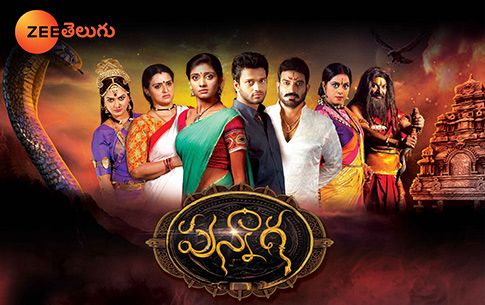


Digital continued to lead the growth of the M&E industry. With 28.8% growth in advertising and 50% growth in subscription, digital media grew by 29.4% shrugging off the impact of GST. The contribution of digital to overall ad spends increased to 17% in 2017, up from 15% a year earlier. This strong growth in digital revenues is underpinned by the increasing reach of the medium and the growth in time spent. India has the second largest internet subscriber base of around 445mn. The strong growth in internet user base, 90% of which access internet on mobile, is driven by the 4G roll-out coupled with falling tariffs. Although the wireless data is growing by leaps and bounds, wired broadband penetration in the country is still low. This is resulting in relatively low per capita data consumption.
Read moreConsumers in India and around the world have been spending more time on their mobile phones. This growth is primarily driven by content consumption and communication, including social media. As per FICCI-EY 2018 Report, over three-fourths of online video consumption in India is taking place on the mobile data network. The rising video consumption has led to proliferation of OTT apps and explosion in content choice available to consumers. Exponential growth in content consumption is likely to continue and video viewing is likely to contribute to 72% of mobile data traffic by 2020 as compared to 40% in 2015. Digital represents a new growth opportunity for entertainment content producers like ZEEL.



With mobile leading the internet penetration, it has emerged as a natural platform for content consumption. To gain subscribers, all large telecom operators have launched affordable data plans and are offering value-added services like entertainment content. They have entered into partnerships with entertainment content creators to offer premium content. To promote data consumption on their platforms, currently content is available free with the data plans. With a large subscriber base, telecom operators provide a captive audience for content creators.
Similar to television viewership, digital consumption is also dominated by Indian language content, accounting for more than 90% of content consumed. Consumers have a propensity to watch entertainment content in their native language, and a higher availability of content in these languages has led to a higher consumption on television. The content consumption pattern on digital could follow a similar trend. With OTT platforms focusing on content in Hindi and regional languages, the consumption is set to increase.
OTT players in India can be broadly classified into four categories – global players, telcos, independent platforms, and broadcasters. Global platforms either cater primarily to the English-speaking audience or are largely driven by user generated content. Telcos are yet to build content creation expertise though they are already playing a crucial role in content aggregation. Independent players’ platforms offer content of specific genres. And lastly, broadcasters’ OTT platforms offer a full spectrum of Indiacentric content. Like in television, more than one player can co-exist in digital space. However, due to a natural constraint on the number of apps that a consumer can have on his phone, too many players will not be able to sustain in the market.
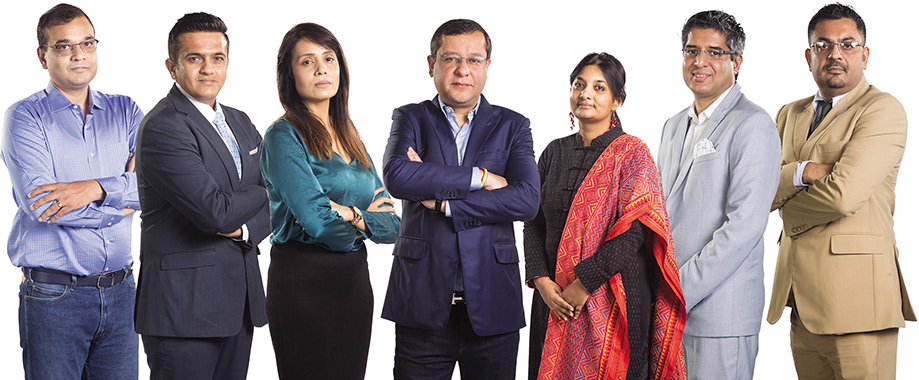
The company launched its new digital offering, ZEE5, on 14th February. The platform presents a significant upgrade, both in terms of content and technology, to the earlier digital offerings - OZEE and dittoTV. A majority subscribers of both these platforms have been upgraded to ZEE5, providing a strong foundation for growth. The initial response to ZEE5 has been encouraging.
Read moreLaunched with over 1,00,000 hours of content across 12 languages, ZEE5’s content catalogue offers extensive choices to the users. With a wide range of content across genres, the platform’s core proposition is ‘content for everyone’.
Considering that majority of Indians have limited familiarity with English, ZEE5 gives consumers an option to choose from 11 Indian languages, which displays navigation menu, content titles, and content synopsis in the language of their choice. Given the inconvenience of typing on small screens, which hampers user experience, the platform has a voice search feature, which enables seamless content discovery. ZEE5 also allows consumers to set the preferred languages for content. To offer a smooth streaming experience, we have partnered with multiple CDNs (Content Delivery Networks), which enables content streaming even when connectivity is poor. Given that internal phone memory is limited for majority of Indians, ZEE5 offers an option to download content on memory card.



As per the FICCI-EY Report, the Indian movie industry grew by 28% YoY to ₹ 156 billion in CY17. Domestic theatrical revenues grew at 12.5% YoY to ₹ 96.3 billion while overseas theatrical collections tripled to ₹ 25 billion. Strong growth in overseas revenues was driven by the success of a few movies in foreign markets. Revenue from sale of digital rights also rose 42% YoY to ₹ 8.5 billion. The Indian movie industry is estimated to grow 7.2% CAGR over CY17-20 as per the Report.
Read moreMovies are immensely popular in India with around 2,000 movies released every year, across several languages. The Indian movie production industry has immensely benefited over the past decade due to multiplex proliferation, decline in piracy due to digitized delivery, and growth of regional cinema. However, domestic theatrical collection has been growing at a slower pace even as multiplexes continue to expand. For larger chains, footfall growth in past couple of years has been trailing growth in seats. While on the one hand, top movies are taking away a larger share, on the other, niche content is getting wider acceptance from the audience.
Digital movie rights and international box office revenue streams have significantly strengthened the economics for Indian movie producers. The sharp increase in content consumption on digital devices is driving up the price of digital rights of movies. For some small budget niche movies, revenues from the sale of digital rights is now equaling the box office collections. Similarly, the international box office is also emerging as an important additional revenue source, especially for large movies.
Zee Studios, ZEEL’s film production and distribution arm, continued to perform well and has now established a strong position in the space. In FY18, the studio released 9 movies across 3 languages, compared to 7 movies in the previous year. All these movies were based on strong story lines and were well received by the audience. Zee Studios continues its focus on building a strong movie slate for the future.
We have a strong line - up of movies for FY19.Some of the movies already locked in for FY19 include - Beyond the Clouds(Hindi), Parmanu(Hindi), Dhadak(Hindi), Manikarnika(Hindi), Nude(Marathi).

The music industry in India, like in most other countries, is growing due to a multi-fold rise in music consumption. Rising smartphone penetration, affordable mobile data, and the growing adoption of music streaming platforms has been the driver for music industry’s growth. India is one of the countries where digital music sales has overtaken physical sales, with digital now accounting for more than 65% of the revenue. While piracy, one of the major leakages for music industry revenue, has come down substantially, music contributes only 1% of the M&E revenue. The music industry grew by 7% in 2017 and is expected to grow at a CAGR of 12% over CY17-20 to ₹ 18 billion.
In India, music produced for movies, both Bollywood and regional, is the key driver for the music industry. This is different than most other countries, where artists are brands themselves and drive the sale of music. In India, the music publishing labels own the rights, including IP rights, of the music and are able to monetize it across platforms. Owning the IP rights to music provides music labels alternate streams of monetization including producing the music in different languages, or producing remix versions.
Zee Music Company (ZMC), our music publishing label, is the fastest growing music label in the country.It has acquired an expansive catalogue of music rights, across languages, to become the second most ‘listened to’ Indian music label in less than 4 years of commencing operations. Its presence across 11 languages makes it the only pan - India player. ZMC is also the second biggest music channel in terms of subscribers on YouTube.Our in-house distribution capability along with key partnerships with major movie studios and leading music streaming platforms, uniquely position ZMC to scale up.Our partnership with small-to-mid sized movies is mutually beneficial, enabling them to leverage our vast distribution network. We are also gradually ramping up our catalogue of ‘ZMC Originals’, which creates original music and provides a platform for new artists to collaborate with senior artists.


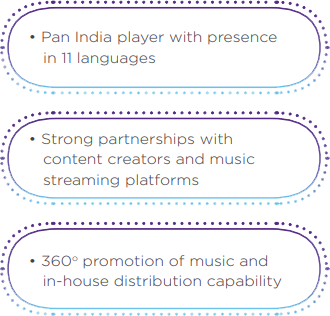
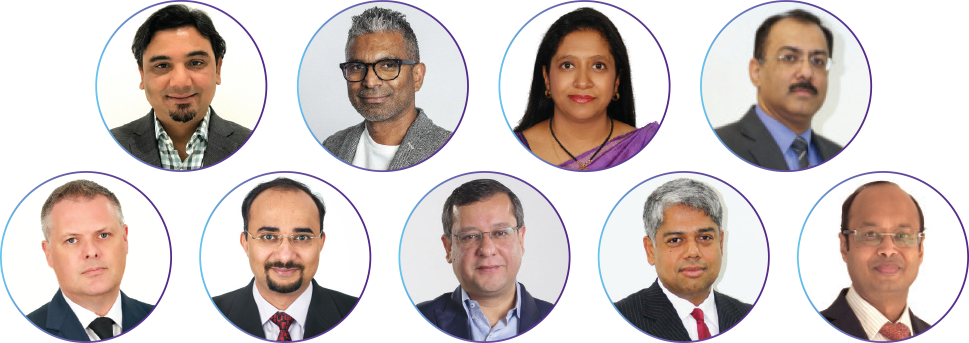
ZEEL’s International Business reaches more than 170 countries with content in 18 languages, including 9 foreign languages. The company has a two-pronged strategy for international markets - reaching the Indian and South Asian diaspora with channel offerings in Indian languages and serving the non-Indian audience in their native language.
Read moreDuring the year, ZEEL increased its reach in international markets and stepped up the local productions in several territories. Our new distribution partnerships across markets like Americas and MENA helped us gain a wider audience. In UK, our channels moved to the basic pack of some of our distributors. These initiatives have helped us increase the reach of ZEEL’s content to 578 million (59% YoY) people. To help us connect better with the audience in international markets, we started local production in several new markets and have ramped up production in existing markets. Most of these shows are ad-funded or sponsored programs.
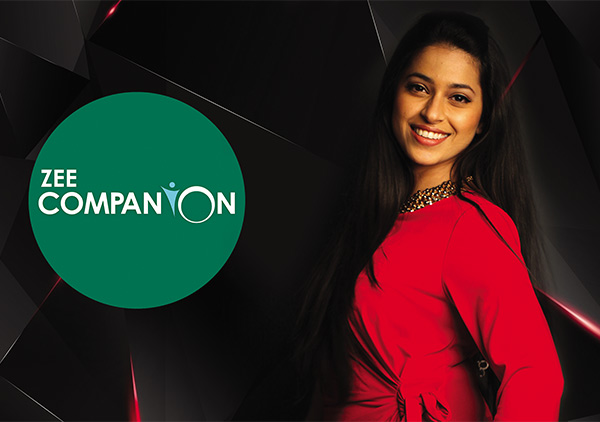

According to the FICCI-EY Report, the organized live events industry in India is estimated to be around ₹ 65.2 billion, growing at 15% CAGR over the last 5 years. It is expected that growth will accelerate and the industry will reach ₹ 109.5 billion in size by CY 2020. IP-related events continue to ramp up and garner a substantially higher revenue share compared to the number of events. The ticketed events space continues to see growth due to the increased propensity to pay for these events, especially in tier-1 cities. With the number of ticketed events going up and event aggregating platforms gaining traction, event discovery and occupancy has improved. If some of the issues such as lack of infrastructure, skilled manpower, and multiple taxes are resolved, the live events space could see a much higher growth.
Read more

Zee Live focuses on creating memorable on-ground experiences for the audiences. It aims to become the gateway to the world for Indian live experiences, while simultaneously bringing the best concepts from around the globe to India. Through Zee Theatre, it aims to revive, restore and spread the rich cultural heritage of theatre and bring together some of the finest works for the audience to experience. With stories across genres, from drama and musical to classics, comedy, horror and satires, Zee Theatre provides entertainement for everyone.
During the last year, Zee Live continued with the execution of its first event IP, Wicked Weekends - India’s longest party marathon, at the biggest hotspots across six cities. Featuring some of the most popular independent Indian musicians, the event has become a platform to connect with the young urban audience. Zee Theatre kick-started Maruti Suzuki Zee Theatre tour and staged 13 plays across 4 cities in India. Zee Live is looking at collating an exciting line-up of events which will enable it to create a strong identity in the live events space.


| (₹ Millions) | FY18 | FY17 | Growth |
|---|---|---|---|
| Operating Revenue | 66,857 | 64,342 | 3.9% |
| Expenditure | 46,096 | 45,073 | 2.3% |
| EBITDA | 20,761 | 19,269 | 7.7% |
| Add: Other Income | 4,403 | 2,240 | 96.6% |
| Less: Depreciation | 1,821 | 1,152 | 58.1% |
| Less: Finance Cost | 1,448 | 1,372 | 5.5% |
| Less: Fair Value Through P&L | 68 | 2,205 | |
| PBT before exceptional items | 21,829 | 16,780 | 30.1% |
| Add: Exceptional Items | 1,346 | 12,234 | |
| PBT after exceptional items | 23,175 | 29,014 | |
| Less: Tax Expense | 8,409 | 6,808 | 23.5% |
| Add: Share of Profit of Associates | 12 | (5) | |
| Less: Minority Interest | (14) | (12) | |
| Profit After Tax (PAT) | 14,791 | 22,213 |
The Company’s consolidated revenues stood at ₹ 66,857 million for the year ended 31st March 2018, compared to ₹ 64,342 million in the previous year, a growth of 3.9%. Adjusted for the sale of Sports business, revenues witnessed a growth of 15.2%. Advertising revenues, at ₹ 42,048 million, witnessed a growth of 14.5%.
Read moreOn a comparable basis (excluding impact of sale of Sports business and acquisitions), domestic advertising revenues grew 15.9% YoY during the year ended 31st March 2018. Growth in the first half of the fiscal was impacted due to disruption in trade channels during transition to GST which lead to a cut back in spends by advertisers. However, ad spends recovered strongly during the second half as FMCG and other consumer discretionary companies stepped up advertising on new product launches and activations. Subscription revenues, at ₹ 20,287 million, witnessed a decline of 10.3%. Excluding the impact of sale of Sports business, domestic subscription business witnessed a growth of 11.8% YoY. The subscription revenue growth for the year was impacted by delay in monetization of newly digitised markets due to uncertainty regarding TRAI’s tariff order. Exit of a DTH player also impacted subscription business during the year.
The Company’s operating expenses stood at ₹ 46,096 million for the year ended 31st March 2018, compared to ₹ 45,073 million in the previous year, a growth of 2.3%. The underlying increase was higher but was offset by the sale of Sports business. On a like to like basis, programming cost increased due to higher original content hours across the network and higher movie amortization cost, while the reported programming cost declined due to sale of Sports business. Advertising, publicity and other expenses increased by 25.6% YoY to ₹ 14,164 million on account of brand refresh campaign, costs related to silver jubilee events and launch of ZEE5
EBITDA at ₹ 20,761 million, witnessed an increase of 7.7%. EBITDA margins stood at 31.1% for the year ended 31st March 2018, as compared to 29.9% during the year ended 31st March 2017. Depreciation and Amortization expense witnessed an increase of 58.1% YoY, led by higher amortization expenses of intangible assets. During the year, the company recorded an exceptional gain of ₹ 1,346 million as against ₹ 12,234 million in the year ended 31st March 2017, relating to sale of Sports business.
Consolidated income tax expense at ₹ 8,409 million witnessed an increase of 23.5% as compared to previous year. Effective tax rate for the year ended 31st March 2018, was at 41.4%, higher than the marginal tax rate. During the year, the company’s foreign subsidiaries paid out dividend of ₹ 7,816 million to the parent entity from the sale proceeds of Sports business. As per Indian tax laws, dividend receipts from foreign subsidiaries attract a tax at the rate of around 17%. Accordingly, the company paid a tax of ₹ 1,352 million on the dividend so received which is part of the current tax line item in P&L statement. Consolidated profits after taxes including exceptional items stood at ₹ 14,791 million.
The Company has adoptetd Indian Accounting Standards (Ind-AS) for the preparation of its consolidated financial statements w.e.f. April 01, 2016, which was required as per notification issued by the Ministry of Corporate Affairs (MCA).
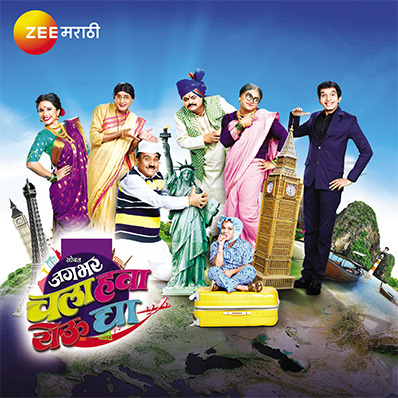

As on 31st March 2018, the Company had cash and cash equivalents of ₹ 16,117 million and treasury investments of ₹ 13,696 million. During the year ended 31st March 2018, the Company’s consolidated long-term debt reduced to ₹ 11,452 million from ₹ 18,208 million during 31st March 2017. Repayment of debt undertaken as part of RBNL acquisition and part redemption of preference shares led to the decline in overall debt position of the Company.
Consolidated operating free cash flow stood at ₹ 5,544 million for the year ended 31st March 2018 as compared to ₹ 7,406 million during the previous year. Higher investments in acquisition of movie rights (satellite and digital rights, including future rights) led to increase in working capital, thereby impacting operating cash flow during the year. Capex during the year stood at ₹ 3,191 million as against ₹ 2,768 million in the previous year. Cash flow from financial activities was impacted due to part redemption of preference shares, repayment of long-term loan which was transferred as part of RBNL acquisition and payment of equity dividend to shareholders.
A detailed risk framework and the risks faced by the Company are presented in a separate section titled, Risk Management Framework, on page 38 of this Annual Report.
ZEEL considers that people are the most important differentiator and there is continuous focus to attract, develop and retain talent. To ensure sustainable growth and prepare for the future, we have been strengthening our talent management, performance management and employee engagement processes. During the year, we continued to build a high-trust, highperformance culture and as a result have been ranked amongst the Top 100 ‘India’s Best Companies to Work For 2017’, as well as amongst the Best Company to Work For in the Media and Entertainment Industry, in a study conducted by Great Place to Work® Institute and The Economic Times. Our endeavor is to build a strong talent pipeline by engaging and hiring talent from renowned campuses, building capabilities in key business functions through training and development initiatives and providing enriching work experience. We also believe in inculcating a strong value system in our people and conduct regular trainings for the same.
Company’s internal control systems are commensurate with the nature of its business and the size and complexity of its operations. These are routinely tested and certified by Statutory as well as Internal Auditors and cover key business areas. Significant audit observations and follow up actions thereon are reported to the Audit Committee. The Audit Committee reviews adequacy and effectiveness of the Company’s internal control processes and monitors the implementation of audit recommendations, including those relating to strengthening of the Company’s risk management policies and systems.
